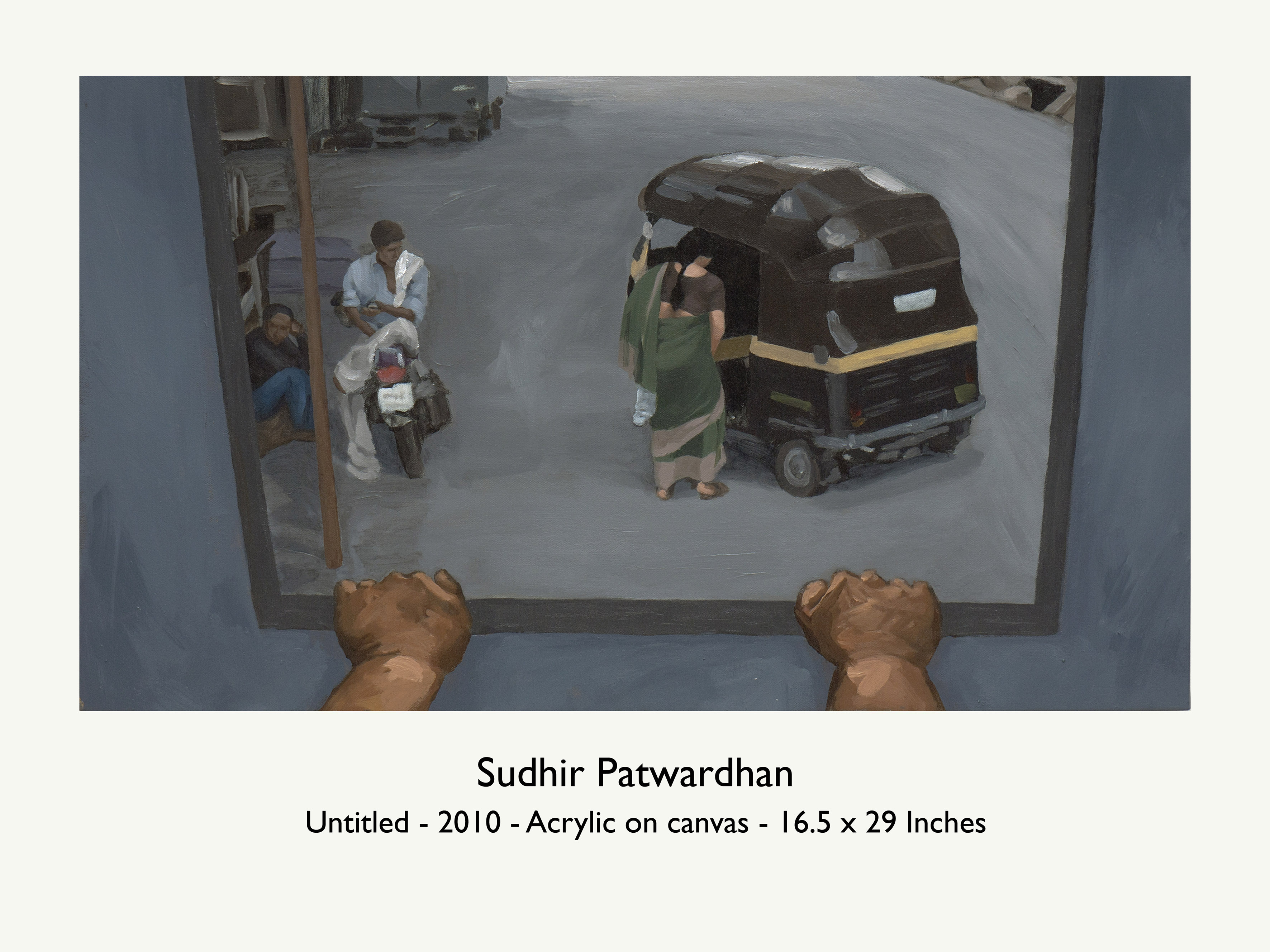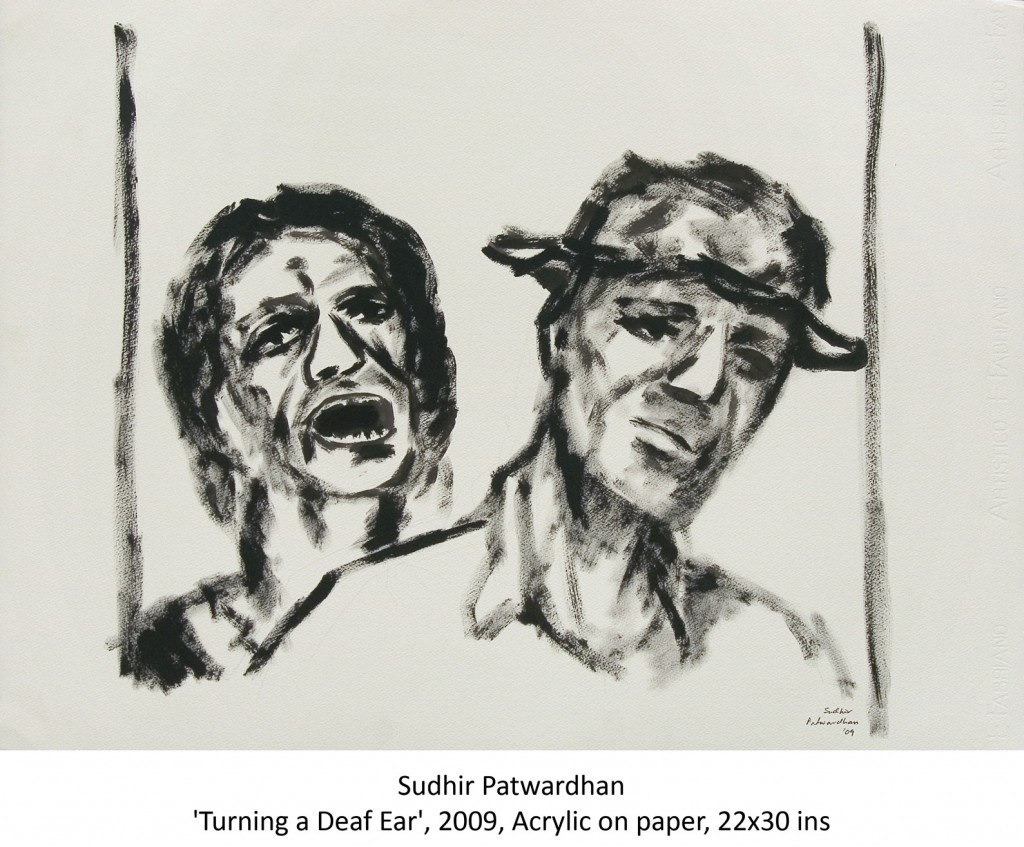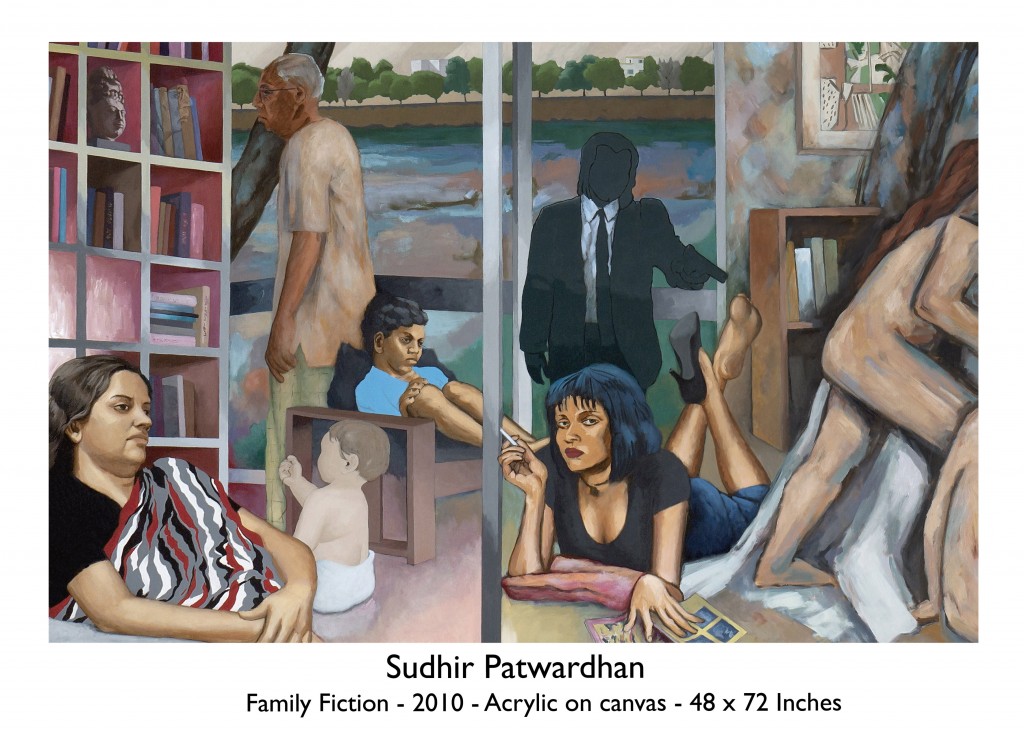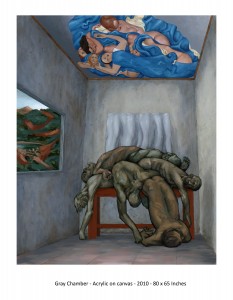Celebrated for his stark depiction of urban life – especially Mumbai’s violence-ridden streets and working class anguish– veteran artist Sudhir Patwardhan now turns his gaze homewards creating playful and poignant domestic scenes within the four walls of a house in an exhibition titled ‘Family Fiction’ in New Delhi. A practicing radiologist till 2005, the artist’s reflections on family life – relationship between a couple, experience of being a son, father and grandfather and even birth and death – is the focus of this new exhibition. Between hanging the paintings at Lalit Kala Academy and fielding phone calls by the minute, Sudhir Patwardhan talks to Unboxed Writers.
Your engagement in the last three decades has been with the common people on the streets of Mumbai. How has the focus shifted to family and relationships within the home?
This transition was triggered off when I became a grandfather in September 2008. I didn’t anticipate the changes my grandson would bring to my art.
But people continue to be the protagonists in your paintings.
Yes, only they are not anonymous labourers of Mumbai streets but characters from my own family and others that I interact with closely. This show is about interiors and images of people at home – situations that are familiar to all of us, feelings that are universal. But they also look below the surface to explore impulses that one would like to keep hidden.
How easy or difficult was it to reveal so much of your own life in these works?
It was both in one sense. While my aim was to make a statement about the universal experience of family life, some of the works are a mirror of my own. In the painting ‘Family’, there are cross currents of happiness, expectations and disappointments that hold the figures together. The feeling of being left out, as you hand over responsibility to a younger couple at home, is not my experience alone. It is a familiar and inevitable situation, the difficulties of which families manage with varying degrees with love and patience.
But in the work ‘Family Fiction’, the enclosed space of the home seems to have opened up, exploded even.
Yes, this is indeed a fantastical world. I have taken images from cinema and art to let them intrude into the home space, causing multiple figures from different worlds to collide. It’s a world of fantasies relived and collapsing time scales. As the young spend their time alone, the elderly are lonely in their space.
These works show so many mixed feelings. Happiness, sadness, despair, hope, longing…That is what relationships are about?
For most couples, growing old together with your partner is a tragic-comic journey. Many of my drawings like ‘Turning A Deaf Ear’, ‘Love’ and ‘Evening’ are about the ups and downs in this journey. Apart from the daily household demands made on it, the husband-wife relation is subject to the high voltage of sexual impulses, making it a testing ground on which all the expectations and frustrations of a man-woman relation are played out. It can breed violence, as well as patient understanding. And that is the universe I am capturing.
You also have dealt with a subject like death in your work. What draws you to these images?
Death of a family member can be devastating, or it can be a relief. Most times our feelings in this regard are ambivalent. This ambivalence leads the mind into dark alleys where every death could be a killing.
So there’s a larger picture?
The need to deal with the image of ‘death through killing’ is wide spread and recurrent in every art form. The need is deep. I have been drawn to images of piles of dead bodies. Feelings of anger, guilt and fascination are so entwined in seeking and looking at these images that it is difficult to know why one seeks them. I have been fascinated, equally, by Gustav Klimt’s erotic image of a pile of naked female bodies; the source image of the ceiling in my painting ‘Gray Chamber’, in which dead bodies are piled on a table. Suppressed violence, fed by sexual impulses probably brought these two images together in my mind.
Your use of windows…is the need to look out into the streets still intact?
But this view is alluring. It excludes the city’s violence, you feel safe inside your own space. I find a dichotomy here as well. Is the inside always experienced as safe? What we find attractive outside our window may be because we want release from too tight an enclosure – from our responsibilities, our desires? Either way, the window is a threshold, a connect between the spaces of the inside and the outside, keeping the distance between them intact.
So, has the street life lost its attraction or has it become more difficult to endure?
The current retraction indoors is probably a phase that will pass. But before it does, I want to explore the place I want to be at most – home!











How Mumbai can be someone’s muse is just mind boggling 🙂 The realism in the images simply blew me away! Beautiful and very moving indeed…
beautiful insights into human relationships! The realism of the paintings is indeed awesome!